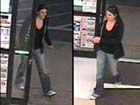
Baton practice at the Manzanar War Relocation Center, 1943
Adams was distressed by the Japanese American Internment that occurred after the Pearl Harbor attack. He requested permission to visit the Manzanar War Relocation Center in the Owens Valley, at the foot of Mount Williamson. The resulting photo-essay first appeared in a Museum of Modern Art exhibit, and later was published as Born Free and Equal: The Story of Loyal Japanese-Americans. He also contributed to the war effort by doing many photographic assignments for the military, including making prints of secret Japanese installations in the Aleutians.Adams was the recipient of three Guggenheim fellowships during his career, the first in 1946 to photograph every National Park.This series of photographs produced memorable images of "Old Faithful Geyser", Grand Teton, and Mount McKinley.
In 1945, Adams was asked to form the first fine art photography department at the San Francisco Art Institute. Adams invited Dorothea Lange, Imogen Cunningham and Edward Weston to be guest lecturers and Minor White to be lead instructor. The photography department produced numerous notable photographers, including Philip Hyde, Benjamen Chinn, Charles Wong, Bill Heick, Ira Latour, Cameron McCauley, and Gerald Ratto.
1950s
In 1952 Adams was one of the founders of the magazine Aperture, which was intended as a serious journal of photography showcasing its best practitioners and newest innovations. He was also a contributor to Arizona Highways, a photo-rich travel magazine which continues today. His article on Mission San Xavier del Bac, with text by longtime friend Nancy Newhall, was enlarged into a book published in 1954. This was the first of many collaborations with her. In June 1955, Adams began his annual workshops, teaching thousands of students until 1981.
By the 1950s, Adams came to believe that he was on the down side of his creative life. He continued with commercial assignments for another twenty years and became a consultant on a monthly retainer for Polaroid Corporation, founded by good friend Edwin Land.[65] He made thousands of photographs with Polaroid products, El Capitan, Winter, Sunrise (1968) being the one he considered his most memorable. In the final twenty years of his life, the Hasselblad was his camera of choice, with Moon and Half Dome (1960) being his favorite photo made with that brand of camera.
Adams published his fourth portfolio, What Majestic Word, in 1963, and dedicated it to the memory of his Sierra Club friend Russell Varian, who was a co-inventor of the klystron and who had died in 1959. The title was taken from the poem "Sand Dunes," by John Varian, Russell's father, and the fifteen photographs were accompanied by the writings of both John and Russell Varian. Russell's widow, Dorothy, wrote the preface, and explained that the photographs were selected to serve as interpretations of the character of Russell Varian.
Later career
In the 1960s, a few mainstream art galleries (without a photographic emphasis) which originally would have considered photos unworthy of exhibit alongside fine paintings decided to show Adams's images – notably the Kenmore Gallery in Philadelphia. In March 1963, Ansel Adams and Nancy Newhall accepted a commission from Clark Kerr, the President of the University of California, to produce a series of photographs of the University's campuses to commemorate its centennial celebration. The collection, titled Fiat Lux after the University's motto, was published in 1967 and now resides in the Museum of Photography at the University of California, Riverside.
In 1974, Adams is guest of honour at the Rencontresd'Arles festival (France). An evening screening at the Arles's Théâtre Antique and an exhibition were presented. The festival celebrated the artist three more times after that: in 1976, 1982 and 1985 through screening and exhibition.
In 1974, Adams had a major retrospective exhibition at the Metropolitan Museum of Art. Much of his time during the 1970s was spent curating and re-printing negatives from his vault, in part to satisfy the great demand of art museums which had finally created departments of photography and desired his iconic works. He also devoted his considerable writing skills and prestige to the cause of environmentalism, focusing particularly on the Big Sur coastline of California and the protection of Yosemite from over-use. President Jimmy Carter commissioned Adams to make the first official portrait of a president made by a photograph.
Work with color film
Unknown to many, Adams did not work exclusively in black and white—he experimented with color, as well. A few examples of his color work are available in the online archive of the Center for Creative Photography at the University of Arizona. His subjects that he shot in color ranged from portraits to landscape to architecture, a similar scope to that of his black and white work. There are two main reasons, according to an expert source, why Adams preferred black and white.
The first was that he felt color could be distracting, and could therefore divert an artist’s attention away from achieving his full potential when taking a photograph. Adams actually claimed that he could get “a far greater sense of ‘color’ through a well-planned and executed black-and-white image than [he had] ever achieved with color photography”.



















